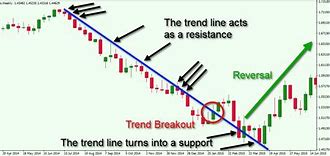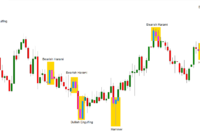In the fast-paced world of forex trading, understanding how to analyze the market is crucial for success. Forex market analysis helps traders make informed decisions by evaluating various economic, political, and technical factors that influence currency prices. This article will explore the different types of market analysis, their significance, and how to apply them effectively to enhance your trading strategies.
Understanding Forex Market Analysis
Definition and Purpose
Forex market analysis refers to the process of evaluating various factors that affect currency exchange rates. The primary purpose is to identify trends, potential reversals, and opportunities for profit.
- Types of Analysis: Traders typically use three main types of analysis: fundamental, technical, and sentiment analysis.
- Goal: The ultimate goal is to make informed trading decisions that maximize returns while minimizing risks.
Importance of Market Analysis in Forex Trading
Effective market analysis is vital for several reasons:
- Informed Decision-Making: Analyzing market conditions helps traders understand where to enter and exit trades.
- Risk Management: Knowledge of market trends and potential reversals can help in setting stop-loss orders effectively.
- Strategy Development: Market analysis provides the foundation for developing and refining trading strategies.
Types of Forex Market Analysis
Fundamental Analysis
Fundamental analysis involves evaluating economic indicators, news events, and geopolitical factors that affect currency values.
Economic Indicators
Key economic indicators include:
- Gross Domestic Product (GDP): Measures the economic performance of a country. A rising GDP generally strengthens a currency.
- Inflation Rates: High inflation can weaken a currency, while moderate inflation may support it.
- Unemployment Rates: Low unemployment rates usually indicate a healthy economy, leading to currency appreciation.
News and Events
Major news releases can significantly impact forex markets:
- Central Bank Decisions: Interest rate changes by central banks can cause immediate fluctuations in currency values.
- Geopolitical Events: Events like elections, trade agreements, and conflicts can influence market sentiment.
Market Sentiment
Market sentiment reflects traders’ overall attitude toward a currency, often influenced by news and economic data.
- Surveys and Indices: Sentiment indicators, such as the Consumer Confidence Index (CCI) and Purchasing Managers’ Index (PMI), provide insights into market mood.
Technical Analysis
Technical analysis focuses on historical price data to identify patterns and trends that can predict future price movements.
Chart Patterns
Traders analyze various chart patterns to forecast price movements:
- Head and Shoulders: Indicates potential reversals; the price may change direction after forming this pattern.
- Double Tops and Bottoms: Suggests that a currency pair has reached a significant resistance or support level.
Technical Indicators
Numerous indicators help traders analyze price movements:
- Moving Averages (MA): Helps smooth out price data to identify trends over time. The 50-day and 200-day moving averages are commonly used.
- Relative Strength Index (RSI): Measures the speed and change of price movements. An RSI above 70 indicates overbought conditions, while below 30 suggests oversold.
Support and Resistance Levels
Support and resistance levels are crucial in technical analysis.
- Support Level: A price level where buying interest is strong enough to prevent further decline.
- Resistance Level: A price level where selling interest is strong enough to prevent further increases.
Sentiment Analysis
Sentiment analysis assesses the mood of the market and how it affects trading decisions.
Understanding Market Sentiment
Market sentiment can be bullish (positive) or bearish (negative):
- Bullish Sentiment: Indicates traders expect prices to rise, leading to increased buying activity.
- Bearish Sentiment: Indicates traders expect prices to fall, leading to increased selling activity.
Tools for Sentiment Analysis
Various tools and resources help gauge market sentiment:
- Commitment of Traders (COT) Reports: Provide insights into the positions of various market participants, including commercial and non-commercial traders.
- Social Media and News: Monitoring social media platforms and financial news can offer insights into trader sentiment and expectations.
Integrating Different Types of Analysis
Combining Fundamental and Technical Analysis
To maximize trading effectiveness, many traders integrate both fundamental and technical analysis.
Fundamental Analysis for Long-Term Trends
Fundamental analysis is more suited for long-term trading strategies. Understanding economic indicators and geopolitical events can help identify potential long-term trends.
- Example: If a country’s GDP is consistently growing, its currency is likely to appreciate over time.
Technical Analysis for Entry and Exit Points
Technical analysis is used to identify optimal entry and exit points in line with fundamental trends.
- Example: A trader may identify a bullish trend supported by strong economic data and use technical indicators to time their entry.
Sentiment Analysis as a Complement
Integrating sentiment analysis can enhance trading decisions:
- Confirmation of Trends: If both fundamental and technical analyses indicate a bullish trend, but sentiment is bearish, traders might approach with caution.
- Identifying Contrarian Opportunities: When sentiment is overly bullish or bearish, it may indicate an impending reversal.
Practical Steps for Conducting Forex Market Analysis
Setting Up Your Trading Plan
A well-defined trading plan incorporates different types of analysis.
Define Your Goals
Identify your trading objectives, such as risk tolerance, profit targets, and trading style.
- Long-Term vs. Short-Term Goals: Understanding your goals will shape your analysis approach.
Choose Your Analysis Tools
Select the tools and platforms you will use for market analysis.
- Charting Software: Platforms like MetaTrader 4 or TradingView offer advanced charting capabilities.
Regularly Monitor Economic Indicators
Stay informed about key economic indicators and their impact on the forex market.
Use an Economic Calendar
An economic calendar provides a schedule of upcoming economic events and data releases.
- Stay Updated: Regularly check the calendar to prepare for potential market movements.
Analyze Market Sentiment
Incorporate sentiment analysis into your trading routine.
Review COT Reports
Regularly review Commitment of Traders (COT) reports to gauge the positioning of major market participants.
- Identify Trends: Look for shifts in positioning that could indicate changes in market sentiment.
Keep a Trading Journal
Maintaining a trading journal helps track your analysis and trading performance.
Document Your Trades
Record each trade, including your analysis, entry and exit points, and outcomes.
- Learning Tool: Regularly review your journal to identify strengths and areas for improvement.
Common Challenges in Forex Market Analysis
Information Overload
The abundance of data can be overwhelming for traders.
Focus on Relevant Information
Prioritize the most impactful indicators and news events that align with your trading strategy.
- Avoid Distraction: Narrowing your focus can help prevent analysis paralysis.
Emotional Decision-Making
Emotions can cloud judgment and lead to poor trading decisions.
Stick to Your Plan
Following your trading plan helps mitigate emotional trading decisions.
- Discipline is Key: Remain disciplined and avoid impulsive reactions to market fluctuations.
Market Volatility
The forex market can be highly volatile, leading to unexpected price movements.
Use Stop-Loss Orders
Implementing stop-loss orders can protect your capital during high volatility.
- Risk Management: Effective risk management strategies are essential to navigate market fluctuations.
Conclusion: Mastering Forex Market Analysis
Forex market analysis is a fundamental skill that every trader must develop to succeed in the forex market. By understanding and applying fundamental, technical, and sentiment analysis, traders can make informed decisions and enhance their trading strategies. Regularly monitoring economic indicators, practicing disciplined trading, and utilizing a trading journal can further improve your trading performance.




